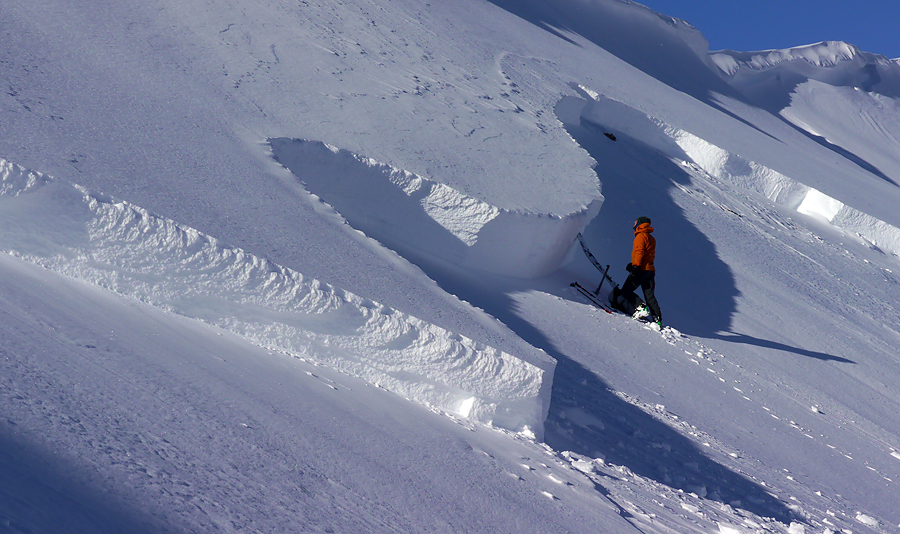
This is the first installment of a new series of mine, “Backcountry: Explained.” The goal of this series is to break down complex backcountry topics into digestible and easy-to-read writeups.
In the backcountry, avalanches are typically at the forefront of skiers’ minds. All things considered, they are one of the riskiest aspects of the sport.
There are nine types of avalanches, each of which forms with different weather conditions and snowpack. The most destructive and often most discussed are slab avalanches. Slab avalanches happen when a strong, cohesive slab of snow forms on top of a weaker layer. This weak layer can be poor interface bonding between two slabs, unstable loose snow, and more. One of the most frequently observed and most prevalent types of slab avalanches is a wind slab.
When the wind is strong enough, it can pick snow up off the surface and transport it across the landscape. As the snow blows across the surface, it bounces off the snow surface and other snow crystals in the air, and over time, the force of impacts breaks particles down. The particles of snow become small and dense through a process called saltation.

The Goldilocks range of the saltation of snow crystals is typically between 20 and 60mph. Below 20mph, the wind doesn’t have enough energy to transport the snow. Above 60mph and the crystals undergo suspension, where they’re launched into the air and sublimate, meaning they go straight from solid to water vapor.
Eventually, the snow crystals will find themselves deposited on a leeward slope, a slope sheltered from the wind and hence lacks the wind speeds necessary to continue transporting the crystals. When the saltated crystals settle on a leeward slope, since they are so much smaller, they can pack into a tighter space, forming a dense slab. This slab can form on a weak interface (where the wind slab has a hard time “sticking” to the snow beneath), a weak layer (like surface hoar, think of an elephant on eggshells), or something else that can pose a problematic risk.

Wind slabs are tricky because wind can load a slope 10x faster than snowfall. Snow from a storm that dropped 12 inches with enough wind could form a 5-foot deep avalanche, which is absolutely deadly and nearly unsurvivable in many cases.
And don’t let seemingly stable conditions catch you off guard. Even when it’s clear and sunny with no snowfall, winds in the 20 to 60mph range can still transport snow and form wind slabs on leeward slopes. Stay safe!
Have a question about backcountry safety concepts? Comment it down below, and we’ll answer it on the next part of Backcountry: Explained!